On Martínez–Kaabar Fractal–Fractional Volterra Integral Equations of the Second Kind
Abstract
1. Introduction
- (i)
- First, we establish the notion of the MKFF Volterra integral equation, focusing on the equations of the second type in Section 2.
- (ii)
- Furthermore, we extend the classic Adomian Decomposition method in the context of MKFF Volterra integral equations of the second kind and analyze its convergence in Section 3.
- (iii)
- Various applications of the proposed extended Adomian Decomposition Method (EADM) are provided to the MKFF Volterra integral equations of the second kind in Section 4.
- (iv)
- In Section 5, we conclude our research work with suggested further research extensions and generalizations in future studies. The results in this work are original and unique, and according to the best of our knowledge, our introduced MKFF has never been studied for integral equations before. Therefore, our proposed MKFF with application can effectively help solve various problems in different fields of engineering sciences, mechanics, biology physics, and many others.
2. Preliminaries
- (i)
- , .
- (ii)
- constant functions .
- (iii)
- .
- (iv)
- .
- (i)
- (ii)
- (iii)
- (iv)
3. Results on MKFF Volterra of the Second Kind
3.1. The Extended Adomian Decomposition Method
3.2. Convergence of the Extended Adomian Decomposition Method (EADM)
4. Applications
5. Conclusions
Author Contributions
Funding
Data Availability Statement
Conflicts of Interest
References
- Rahman, M. Integral Equations and their Applications. Methods and Applications; Wit Press: Boston, MA, USA, 2007. [Google Scholar]
- Wazwaz, A.M. Linear and Nonlinear Integral Equations. Methods and Applications; Springer: Berlin/Heidelberg, Germany, 2011. [Google Scholar]
- Wazwaz, A.M. A First Course in Integral Equations, 2nd ed.; World Scientific: Singapore, 2015. [Google Scholar]
- Aggarwal, S.; Dua, A.; Bhatnagar, K. Method Taylor’s series for the primitive of linear first kind Volterra integral equation. Int. J. Sci. Res. Publ. 2019, 9, 926–931. [Google Scholar]
- Husain, Y.A.; Bashir, M.A. The Application of Adomian Decomposition Technique to Volterra Integral type of Equation. Int. J. Adv. Res. 2020, 8, 117–120. [Google Scholar] [CrossRef]
- Emmanuel, F.S. Solution of Integral Equations of Volterra type using the Adomian Decomposition Method (ADM). MathLab J. 2020, 7, 16–23. [Google Scholar]
- Cherruault, Y.; Saccomandi, G.; Some, B. New results for convergence of Adomian’s Method applied to integral equations. Math. Comput. Model. 1992, 16, 85–93. [Google Scholar] [CrossRef]
- El-Kalla, I.L. Convergence of the Adomian Method applied to a class of nonlinear integral equations. Appl. Math. Lett. 2008, 21, 372–376. [Google Scholar] [CrossRef]
- Feng, J.-Q.; Sun, S. Numerical Solution of Volterra Integral Equation by Adomian Decomposition Method. Asian Res. J. Math. 2017, 4, 1–12. [Google Scholar] [CrossRef]
- Khalil, R.; Al-Horani, M.; Yousef, A.; Sababheh, M. A new definition of fractional derivative. J. Comput. Appl. Math. 2014, 264, 65–70. [Google Scholar] [CrossRef]
- Miller, K.S. An Introduction to Fractional Calculus and Fractional Differential Equations; J. Wiley & Sons: New York, NY, USA, 1993. [Google Scholar]
- Podlubny, I. Fractional Differential Equations, Mathematics in Science and Engineering; Academic Press, Inc.: San Diego, CA, USA, 1999. [Google Scholar]
- Kibas, A.A.; Srivastava, H.M.; Trujillo, J.J. Theory and Applications of Fractional Differential Equations; North-Holland: New York, NY, USA, 2006. [Google Scholar]
- Arshad, S.; Sun, S.; O’Regan, D. Lp-solutions for fractional integral equations. Fract. Calc. Appl. Anal. 2014, 17, 259–276. [Google Scholar] [CrossRef]
- Kaewnimit, K.; Wannalookkhee, F.; Orankitjaroen, S. The Solutions of Some Riemann-Liouville Fractional Integral Equations. Fractal Fract. 2021, 5, 154. [Google Scholar] [CrossRef]
- Abdelhakim, A.A. The flaw in the conformable calculus: It is conformable because it is nor fractional. Fract. Calc. Appl. Anal. 2019, 22, 245–252. [Google Scholar] [CrossRef]
- Abu-Shady, M.; Kaabar, M.K.A. A Generalized Definition of the Fractional Derivative with Applications. Math. Probl. Eng. 2021, 2021, 9444803. [Google Scholar] [CrossRef]
- Abu-Shady, M.; Kaabar, M.K.A. A novel computational tool for the fractional-order special functions arising from modelling scientific phenomena via Abu-Shady-Kaabar fractional derivative. Comput. Math. Methods Med. 2022, 2022, 2138775. [Google Scholar] [CrossRef] [PubMed]
- Martínez, F.; Kaabar, M.K.A. A novel theorical investigation of the Abu-Shady-Kaabar fractional derivative as a modelling tool for science and engineering. Comput. Math. Methods Med. 2022, 2022, 4119082. [Google Scholar] [CrossRef] [PubMed]
- Chen, W. Time-space fabric underlying anomalous diffusion. Chaos Solitons Fractals 2006, 28, 923–929. [Google Scholar] [CrossRef]
- Chen, W.; Sun, H.; Zhang, X.; Korosak, D. Anomalous diffusion modeling by fractal and fractional derivatives. Comput. Math. Appl. 2010, 59, 1754–1758. [Google Scholar] [CrossRef]
- Atangana, A. Fractal-fractional differentiation and integration: Connecting fractal calculus and fractional calculus to predict complex system. Chaos Solitons Fractals 2017, 102, 396–406. [Google Scholar] [CrossRef]
- Martínez, F.; Kaabar, M.K.A. A new generalized definition of fractal-fractional derivative with some applications. Math. Comput. Appl. 2024, 29, 31. [Google Scholar] [CrossRef]
- Araz, S.İ. Numerical analysis of a new volterra integro-differential equation involving fractal-fractional operators. Chaos Solitons Fractals 2020, 130, 109396. [Google Scholar] [CrossRef]
- Rahimkhani, P.; Sedaghat, S.; Ordokhani, Y. An effective computational solver for fractal-fractional 2D integro-differential equations. J. Appl. Math. Comput. 2024, 70, 3411–3440. [Google Scholar] [CrossRef]
- Al Masalmeh, M. Series Method to solve conformable fractional Riccati differential equations. Int. J. Appl. Math. Res. 2017, 6, 30–33. [Google Scholar] [CrossRef]
- Martínez, F.; Martínez, I.; Kaabar, M.K.A.; Paredes, S. Some new results on conformable fractional power series. Asia Pac. J. Math. 2020, 7, 1–14. [Google Scholar]
- Apostol, T.M. Calculus, I, 2nd ed.; John Wiley & Sons: Hoboken, NJ, USA, 1991. [Google Scholar]
- Providas, E.; Parasidis, I.N. Analytical Solution of n th-Order Volterra Integro-Differential Equations of Convolution Type with Non-local Conditions. In Analysis, Geometry, Nonlinear Optimization and Applications; World Scientific: Singapore, 2023; pp. 659–675. [Google Scholar]
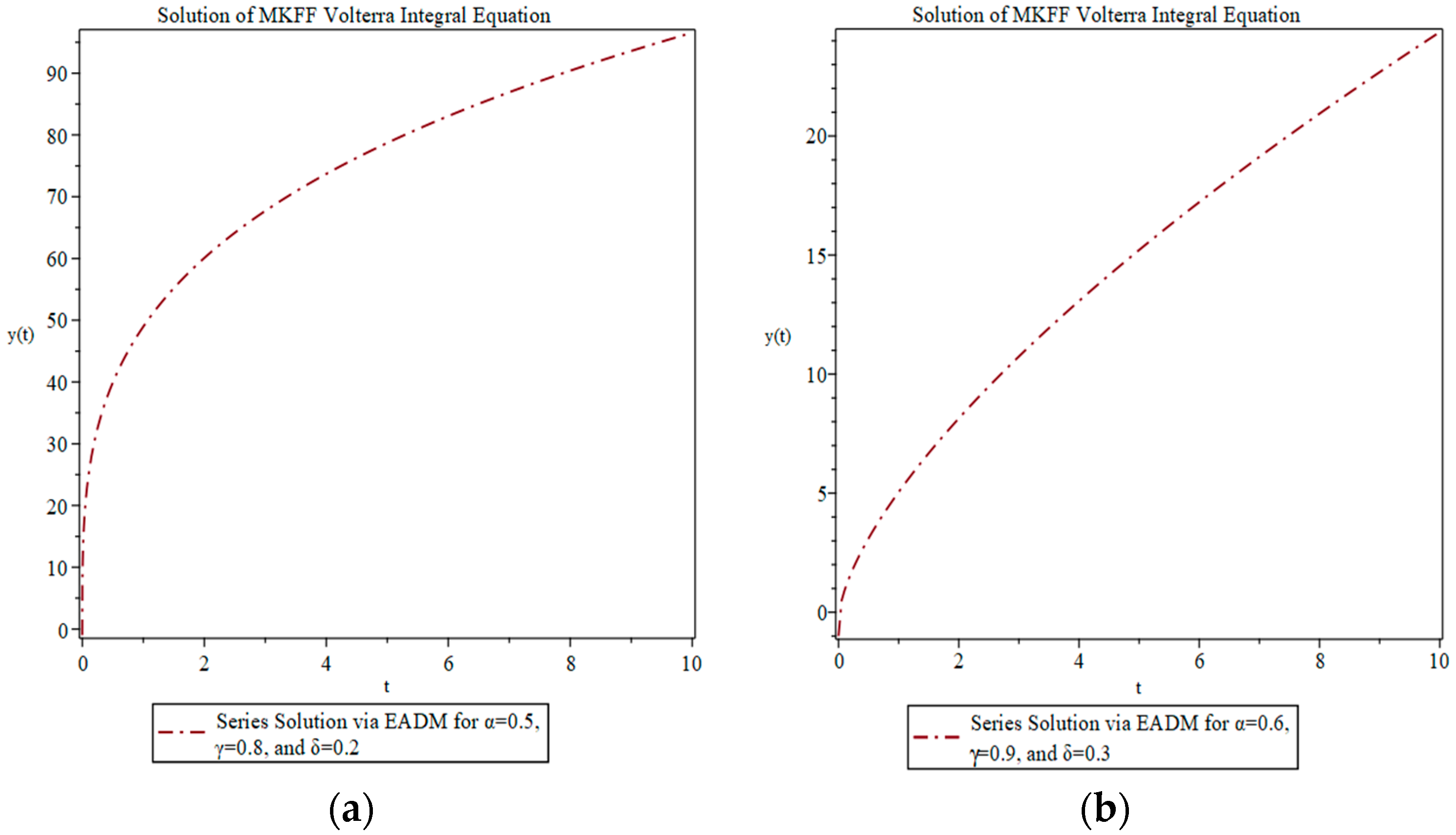
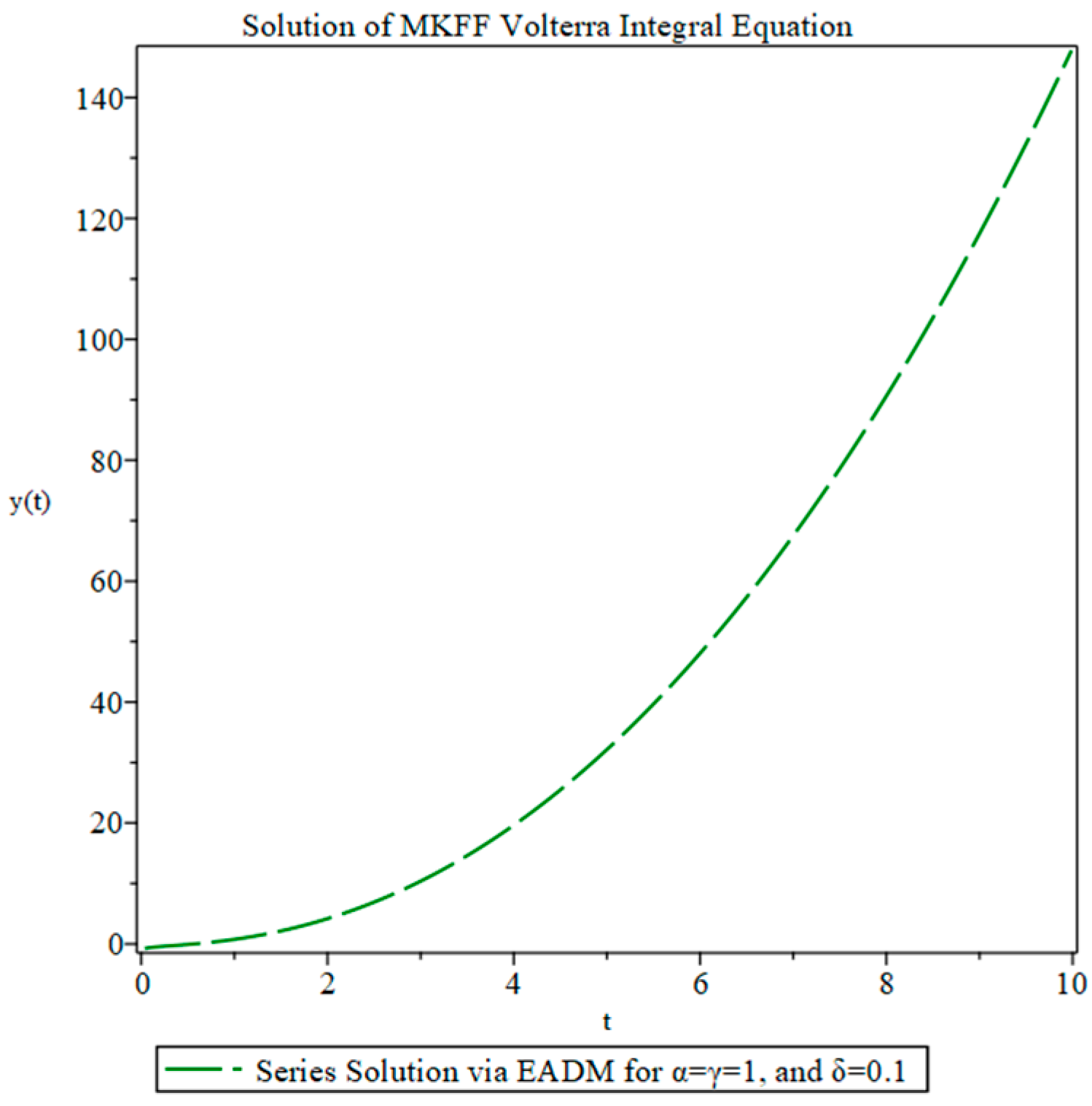
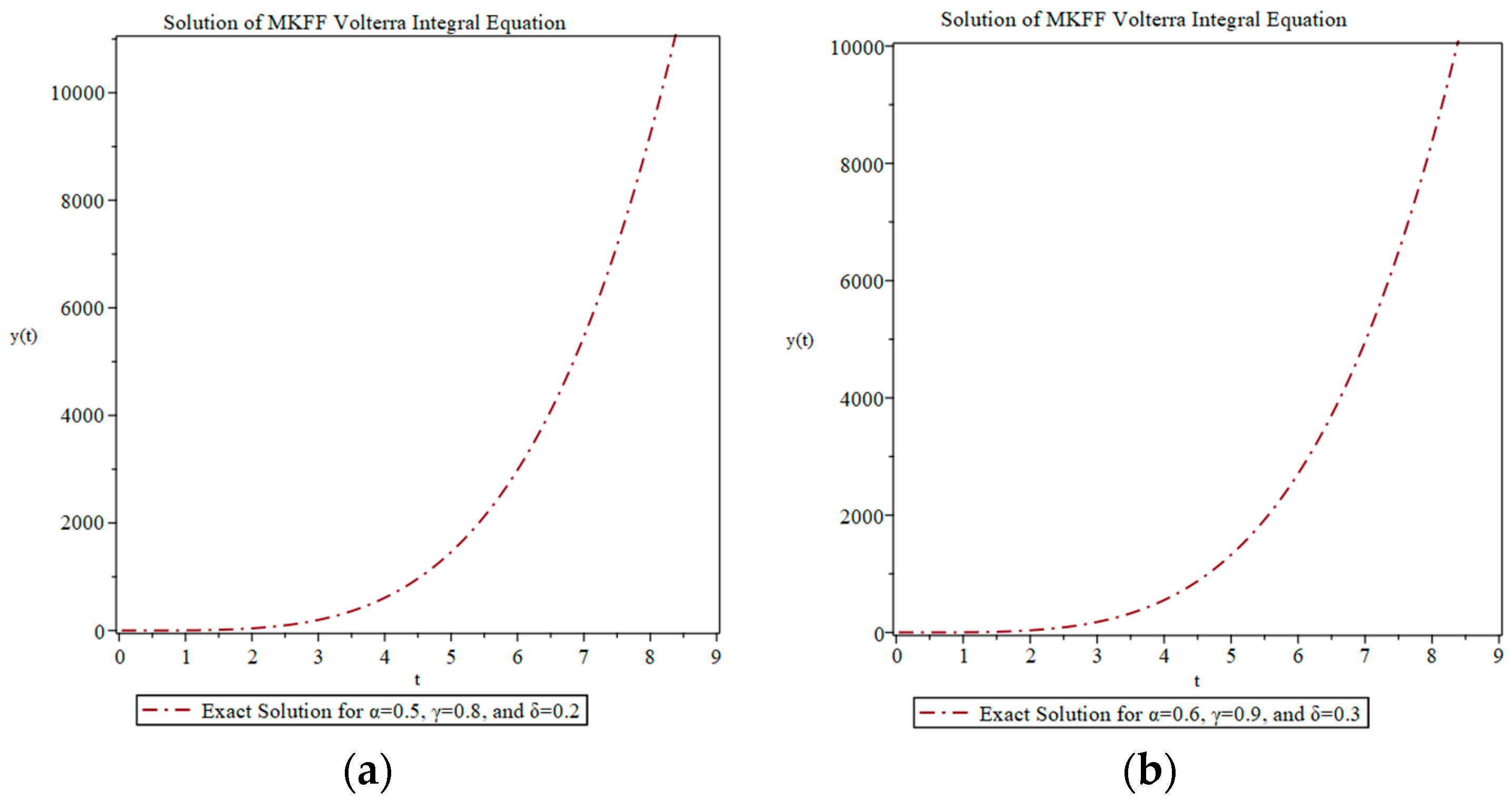
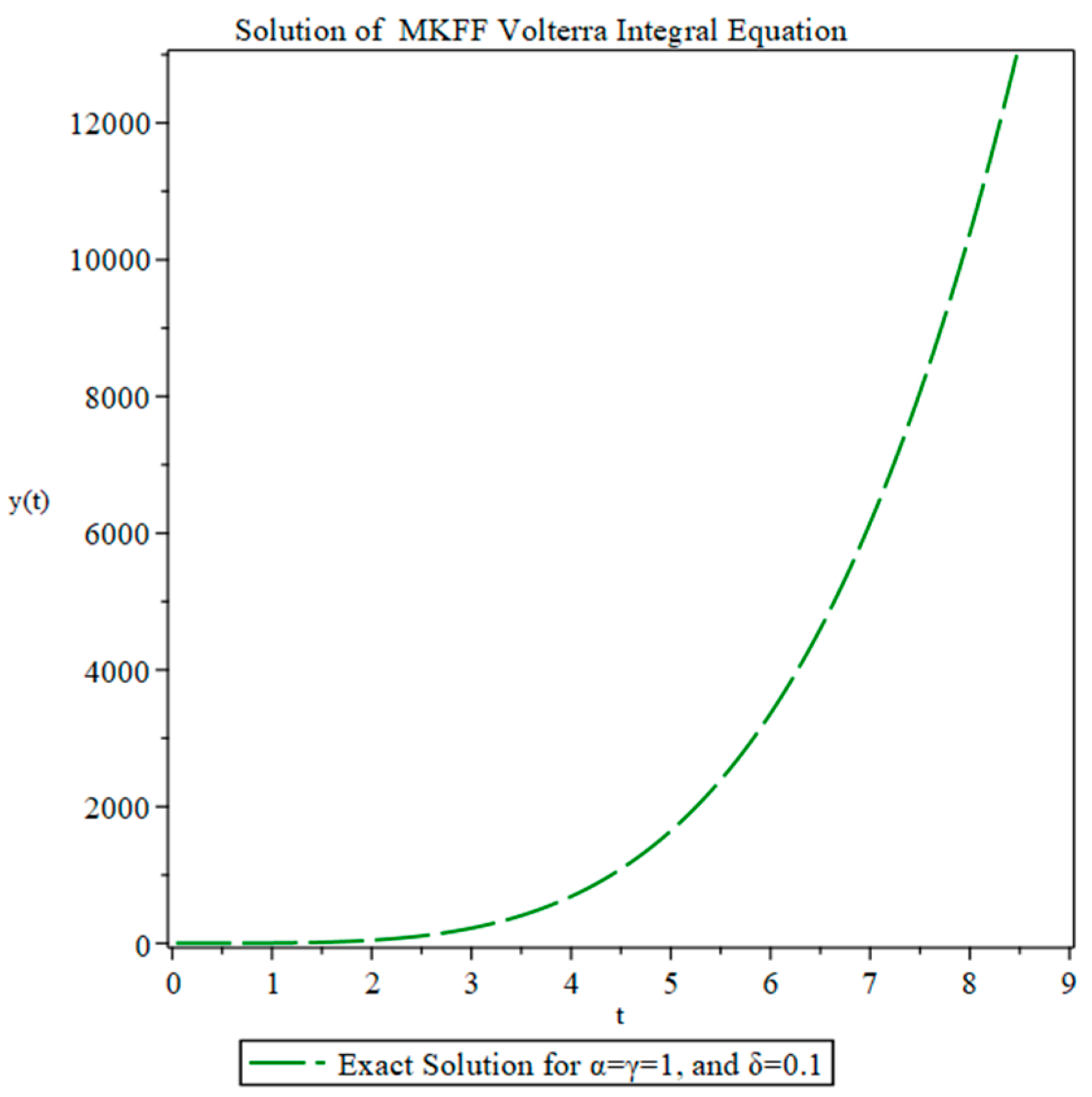

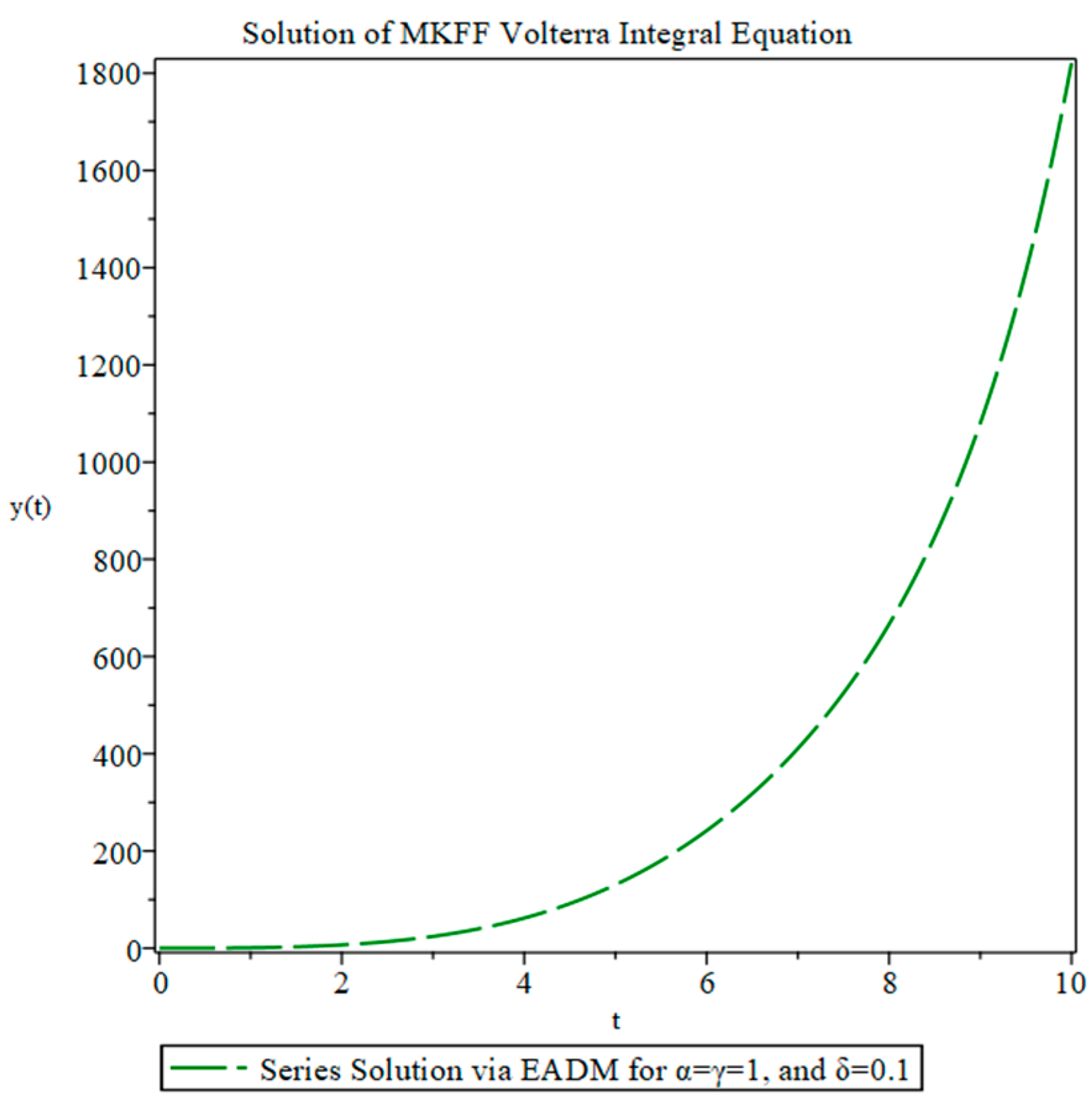

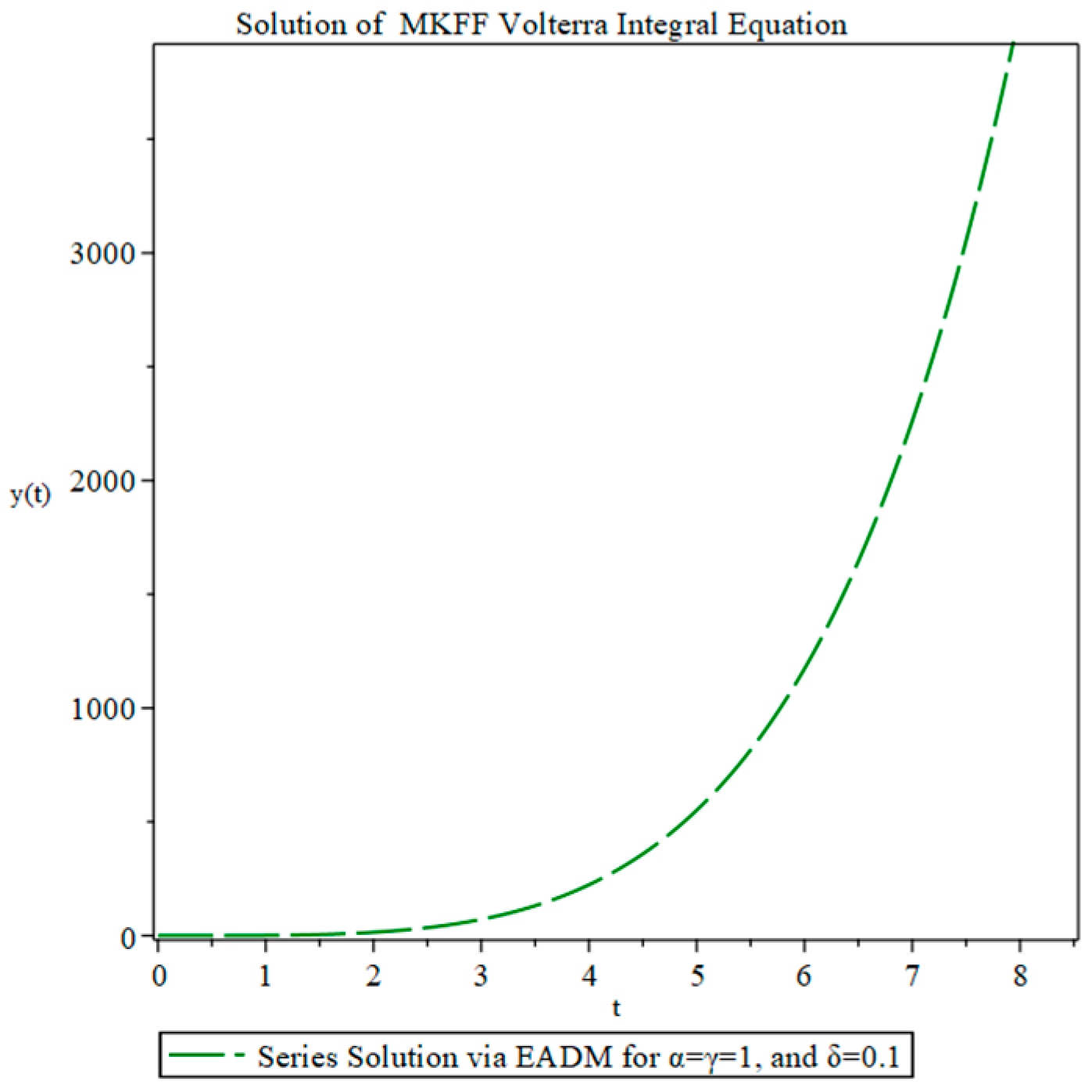
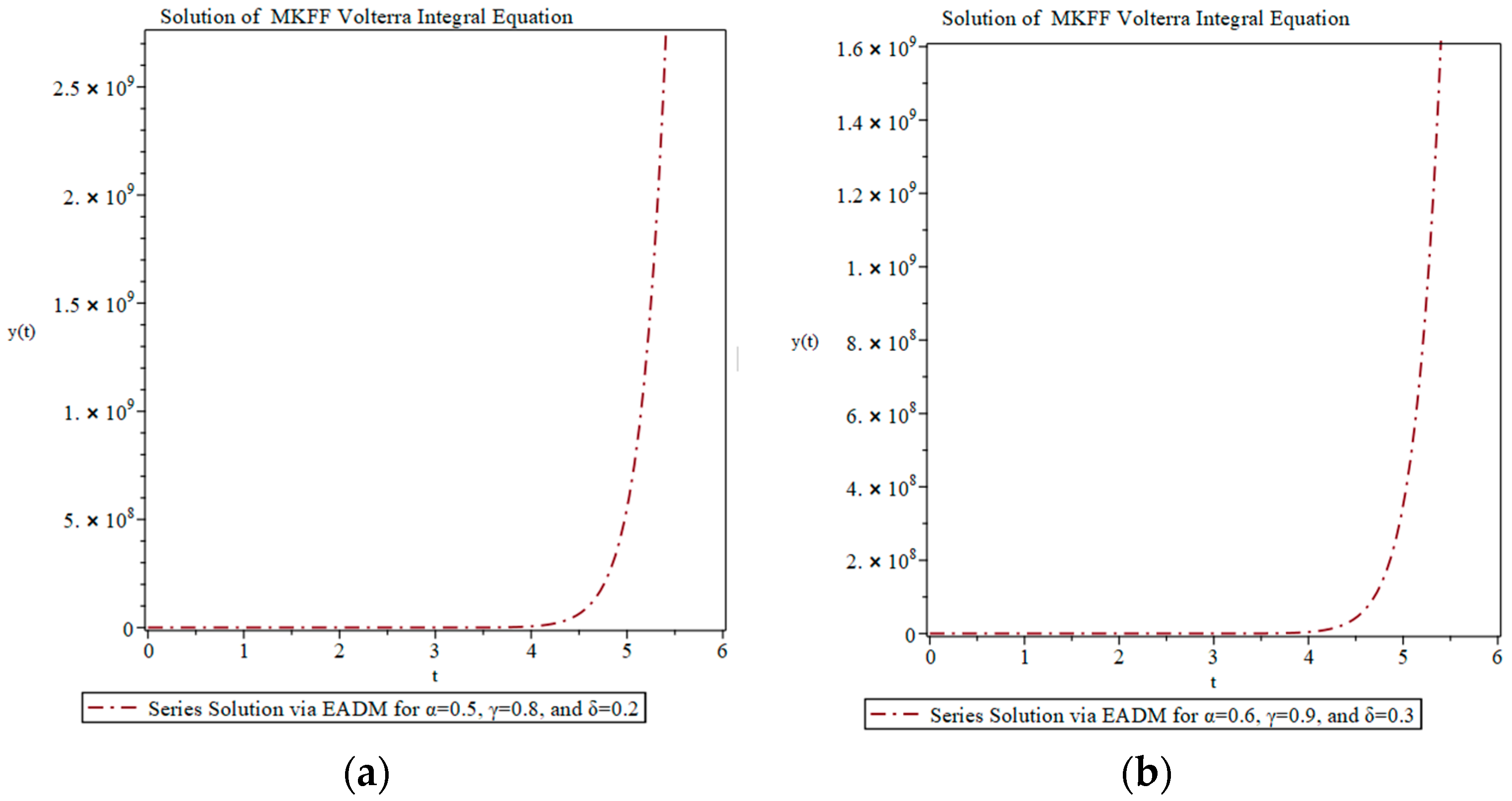
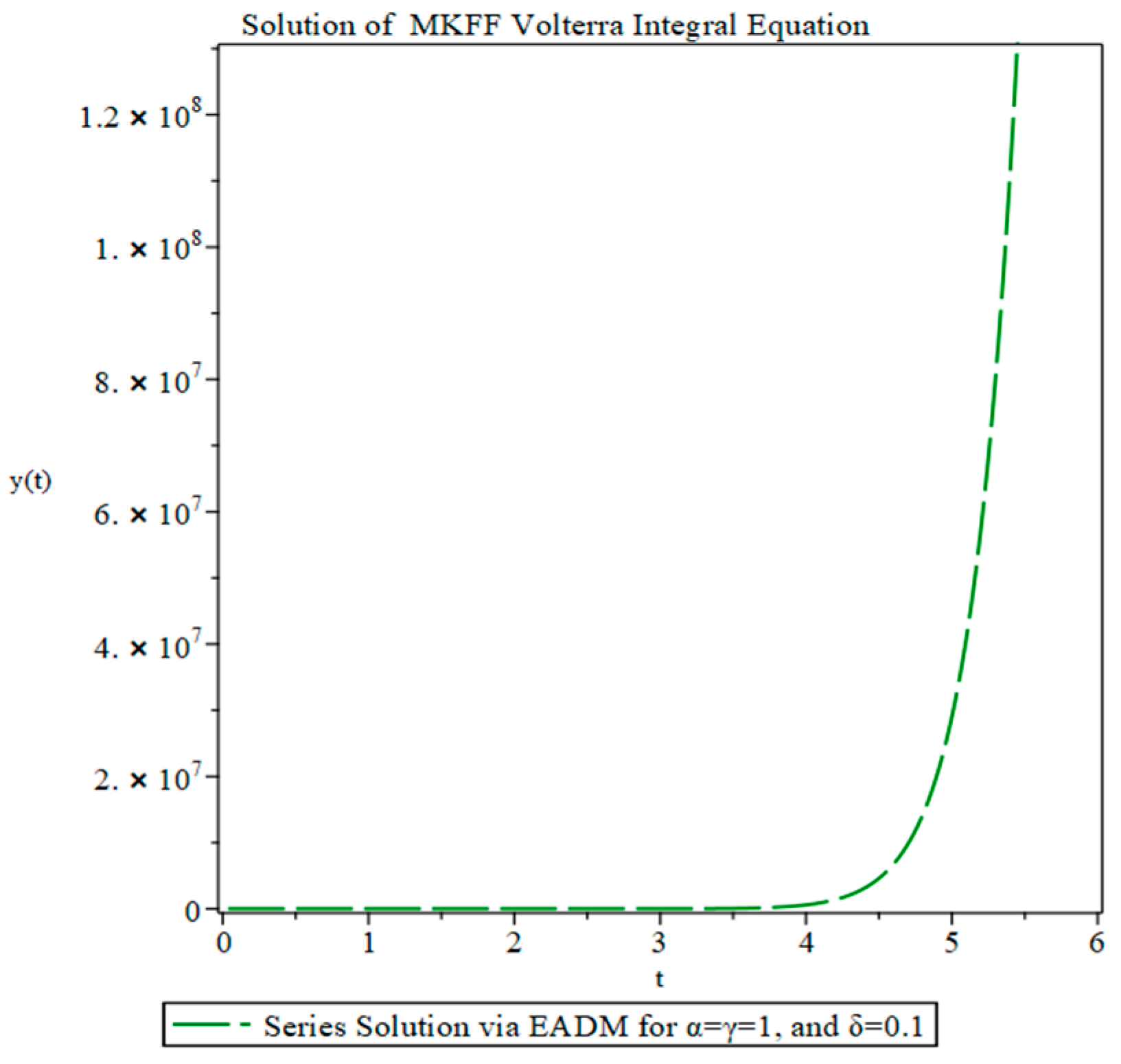
Disclaimer/Publisher’s Note: The statements, opinions and data contained in all publications are solely those of the individual author(s) and contributor(s) and not of MDPI and/or the editor(s). MDPI and/or the editor(s) disclaim responsibility for any injury to people or property resulting from any ideas, methods, instructions or products referred to in the content. |
© 2024 by the authors. Licensee MDPI, Basel, Switzerland. This article is an open access article distributed under the terms and conditions of the Creative Commons Attribution (CC BY) license (https://creativecommons.org/licenses/by/4.0/).
Share and Cite
Martínez, F.; Kaabar, M.K.A. On Martínez–Kaabar Fractal–Fractional Volterra Integral Equations of the Second Kind. Fractal Fract. 2024, 8, 466. https://doi.org/10.3390/fractalfract8080466
Martínez F, Kaabar MKA. On Martínez–Kaabar Fractal–Fractional Volterra Integral Equations of the Second Kind. Fractal and Fractional. 2024; 8(8):466. https://doi.org/10.3390/fractalfract8080466
Chicago/Turabian StyleMartínez, Francisco, and Mohammed K. A. Kaabar. 2024. "On Martínez–Kaabar Fractal–Fractional Volterra Integral Equations of the Second Kind" Fractal and Fractional 8, no. 8: 466. https://doi.org/10.3390/fractalfract8080466
APA StyleMartínez, F., & Kaabar, M. K. A. (2024). On Martínez–Kaabar Fractal–Fractional Volterra Integral Equations of the Second Kind. Fractal and Fractional, 8(8), 466. https://doi.org/10.3390/fractalfract8080466






